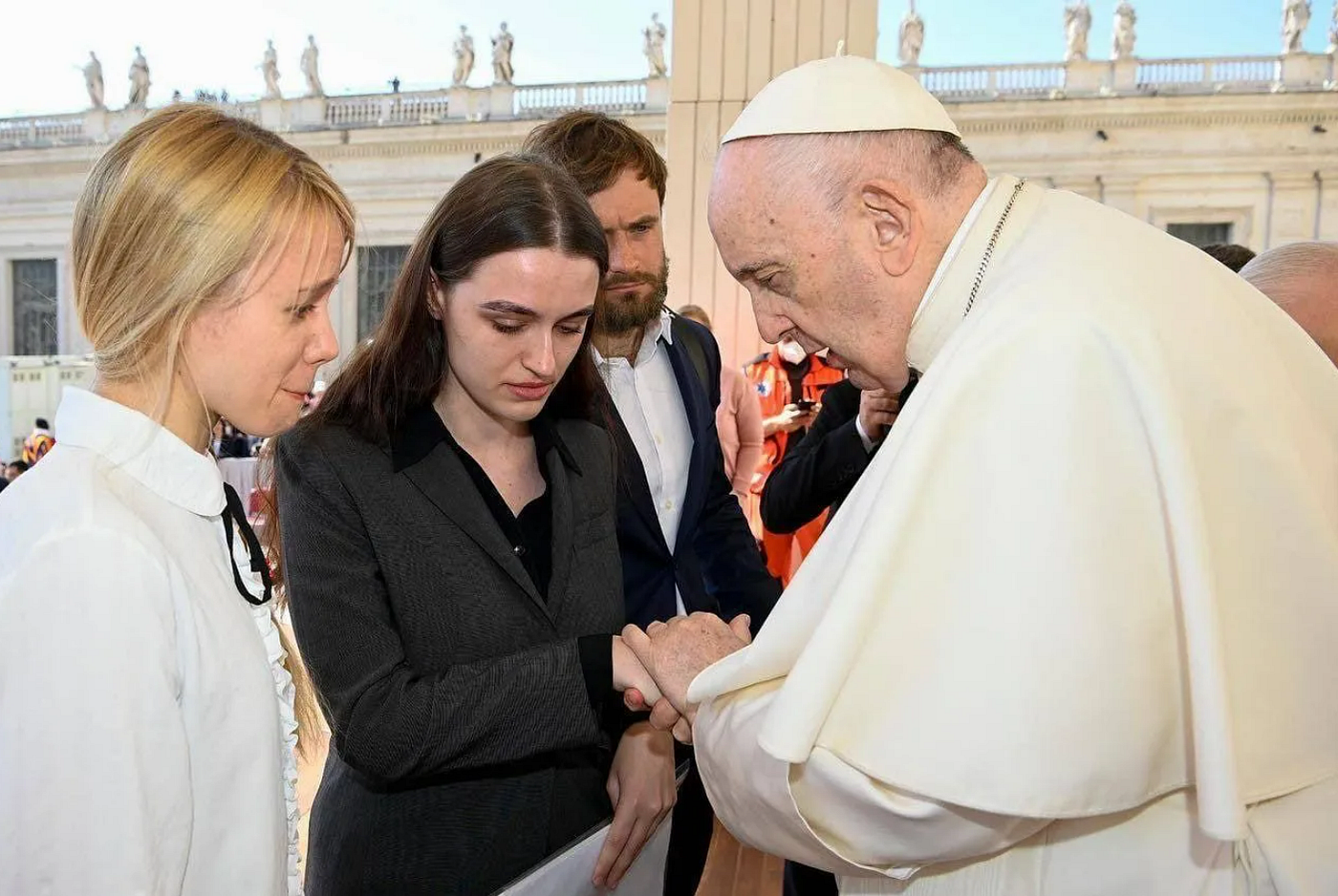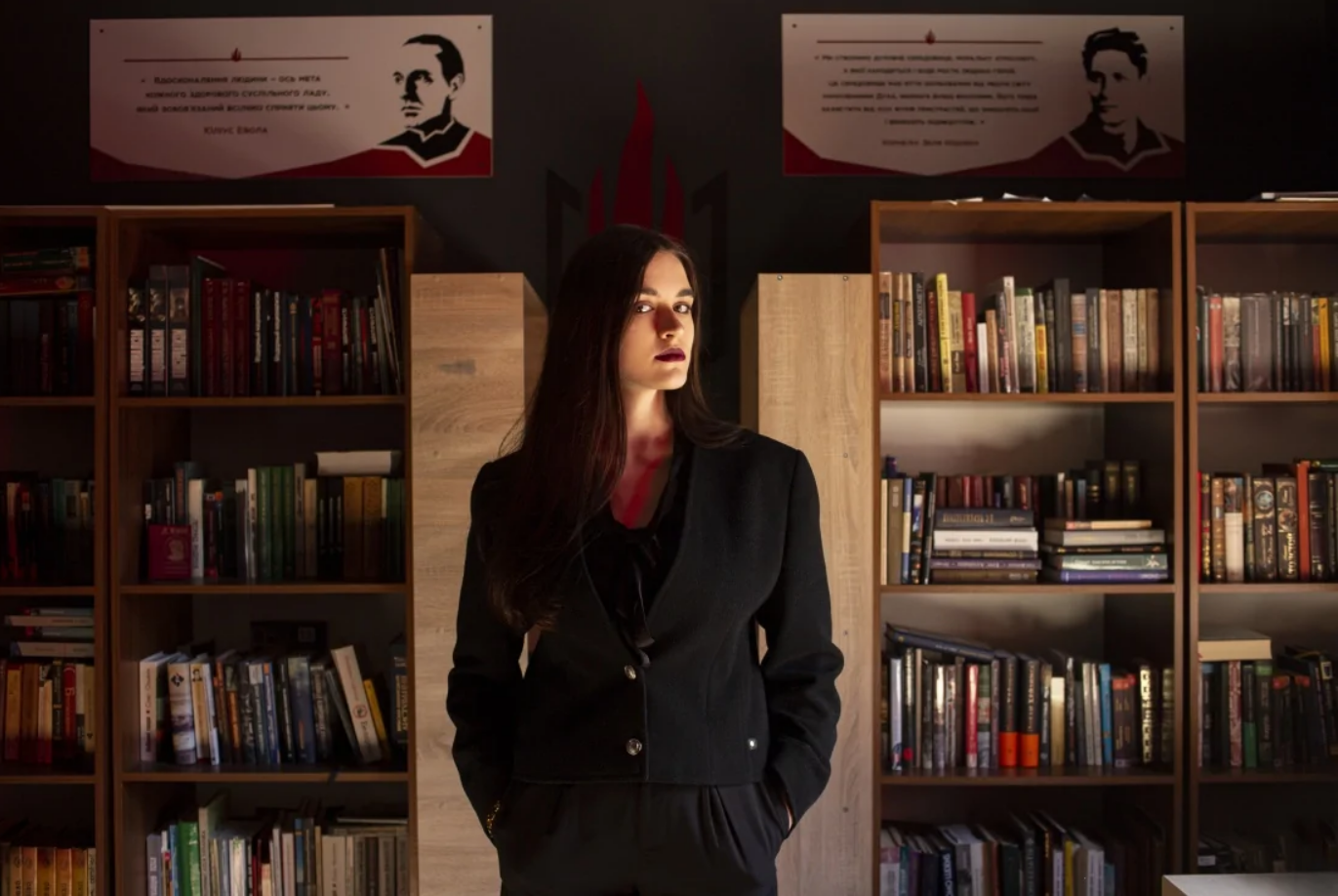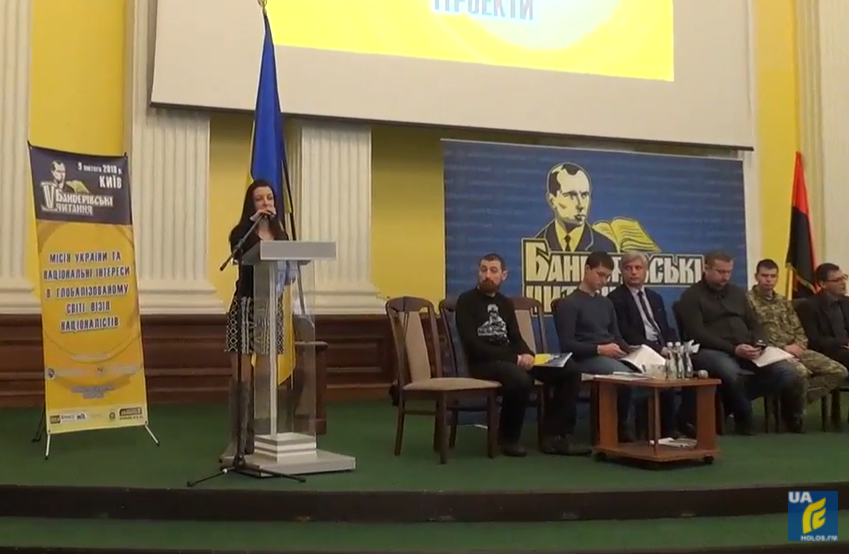Fascists in defence of ‘democratic values’? The whitewashing of the Ukrainian far right continues
With the Azov regiment having finally accepted defeat and surrendered the Avostal steel plant to Putin’s forces, abandoning the last remaining centre of resistance in Mariupol, we are thankfully spared the daily spectacle of a leading component of the Ukrainian extreme right being portrayed by the western media as heroic protectors of political freedom. For all his tributes to the courage of Azovstal’s defenders, I suspect Volodomyr Zelensky himself can see an upside to the capture of Azov’s fighters, who it is reported will be excluded by Russia from any future prisoner exchange and put on trial for war crimes. That way, when he eventually negotiates a peace deal with Moscow, there will be rather less chance of Zelensky getting assassinated by an outraged fascist accusing him of betraying the fatherland.
Mainstream reporting of Azov has changed a lot over the eight years since its launch. For a period there was, understandably, considerable media interest in the phenomenon of a fascist-led paramilitary formation operating as part of a western ally’s state forces. Then, during the run-up to the Russian invasion of Ukraine, such objective analysis became politically inconvenient and we were treated instead to blithe denials of the far-right character of Azov. If acknowledged at all, its fascist politics were said to be a thing of the past, irrelevant to the regiment’s role today. Buried at the bottom of a BBC report on the fall of Mariupol was the short note: “The Azov regiment, set up as a volunteer militia in 2014 but now a National Guard unit, once had links to the far right.”
The fascist origins of the regiment are hardly in dispute. Founder Andriy Biletsky declared in October 2014 that “Azov’s heart is based on its right-wing ideology. It’s the legacy of Patriot of Ukraine” — the latter organisation being a neo-Nazi outfit that Biletsky had led for nearly a decade. The incorporation of Azov into Ukraine’s National Guard the following month changed little, because the patronage of interior minister Arsen Avakov ensured that the regiment enjoyed an autonomous status, retaining its own command structure, carrying out its own recruitment and raising its own finance. Nor did Biletsky’s formal separation from the regiment in 2016 to launch his far-right political party National Corps prevent his continued involvement in an organisation that never ceased to recognise him as its leader. (In an article for the Atlantic Council, Bellingcat researcher Oleksiy Kuzmenko demolished the myth of the Azov regiment’s break with far-right politics and its original leadership, while Branko Marcetic has provided additional details in a piece for Jacobin.)
Azov is in any case not just a unit of the National Guard but also a wider extreme rightwing nationalist movement. Biletsky referred in 2019 to “the large Azov family, which over the last five years has formed around the regiment” — and in whose ranks he said he would “forever remain”. Over the years Cossack House in Kyiv, which is rented from the ministry of defence, has served as a social, cultural and educational centre for this “multi-pronged, heterogeneous far-right social movement”, as another Bellingcat researcher Michael Colborne describes it. Journalists have visited Cossack House to interview individuals such as Ihor Mikhailenko, leader of Azov’s vigilante force the National Militia (since rebranded as Centuria). Or Olena Semenyaka, who as international secretary of Biletsky’s National Corps has established links with neo-Nazi and white supremacist groups abroad. Or Yulia Fedosiuk of the Azov literary club and publishing house Plomin, who helpfully explained that she and her comrades took their inspiration from the movement led by Romanian fascist Corneliu Codreanu.
Fedosiuk’s husband Arseny is a veteran of the Azov regiment, having joined up back in 2014 — when even Azov’s present-day apologists concede that it was part of the far right — and he fought against pro-Russian separatists in Donbass before ending up besieged at the Mariupol steelworks. Yulia Fedosiuk made the news recently as part of a group of Azov wives who toured western Europe to publicise the Azovstal fighters’ plight. Along with Kateryna Prokopenko, whose husband Denys was the Azov regiment’s commander, Fedosiuk was granted a tearful audience with the pope to plead for his intercession with Putin to save their partners’ lives. Needless to say, the sympathetic media coverage the women received didn’t see fit to mention Azov’s far-right politics or indeed Fediosuk’s own expressed admiration for fascism.

Interviewed by Kirsty Wark on BBC’s Newsnight, Fedosiuk paid an emotional tribute to her husband and his supposed motives for joining the Azov regiment. “For me it’s very important that he was always ready to protect, to defend true democratic values”, she declared, “and that’s why I love him so much.” Speaking to Euronews she complained indignantly that “many people think that Azov soldiers are neo-Nazis or fascists”, her explanation for this widespread belief being that “Russian propaganda in Europe is strong”.
Fedosiuk went on to insist that Azov has no truck with antisemitism. Strange, then, that she expressed her admiration for the virulent antisemite Codreanu. Odd, too, that she worked for Plomin despite it being headed by Yevhen Vriadnyk, who according to Michael Colborne’s book From the Fires of War: Ukraine’s Azov Movement and the Global Far Right is “openly anti-Semitic”. Colborne has detailed Plomin’s involvement in the publication of a Ukrainian translation of Italian neo-fascist Franco Freda’s pamphlet The Disintegration of the System, which endorses the Judeo-Masonic conspiracy theory and talks about having “accounts to settle with the Jewish or Judaized Europe”. As Colborne observes, Azov’s propensity for double-talk and denial is particularly notable in connection with antisemitism, where assurances to western journalists that the movement welcomes Jewish members are contradicted elsewhere by expressions of extreme hostility towards Jews.
To give you a flavour of Plomin’s ideological leanings, the photo below is of Fedosiuk in 2020 in the organisation’s library at Cossack House. The posters on the wall behind her celebrate (left) Italian fascist intellectual Julius Evola and (right) the aforementioned Corneliu Codreanu. Plomin has published Ukrainian translations of writings by both of these notorious figures from the history of the European far right. “Azov as a whole is explicitly opposed to liberal democracy”, Colborne has pointed out. “The authors who influence them, who they openly wear on their sleeves, are ultranationalist, far-right and fascist.”

Fedosiuk was central to the development of another organisation based at Cossack House, the women’s group Srіblo Troiandy (Silver Roses), which counted Olena Semenyaka of National Corps among its members. The group attracted media attention two years ago when they turned up at the International Women’s Day march in Kyiv carrying a coffin inscribed with the word “feminism”. The rightwing thinking behind the stunt was laid out by Fedosiuk in an article titled “Obituary of feminism”, which argued that “the construct ‘emancipation of women’ is demagoguery” and accused feminists of forcing women “to imitate the masculine personality”. According to Fedosiuk, the influence of such ideas has “resulted in a demographic crisis, as feminism has contributed to the trend of divorce and low birth rates of indigenous ethnic peoples by popularising the image of a ‘successful’ career woman and her hedonistic self-realisation”. (This is a major theme in far-right “replacement theory”.)
A contemporary profile of the Silver Roses published by the Ukrainian news and media site Babel revealed some biographical details about Fedosiuk. Having by her own account been a bit of a liberal in her youth, she was radicalised through participation in the Maidan protests of 2013–14, in which the violence of the far right played a decisive role in driving elected president Viktor Yanukovych from office. In the subsequent presidential election she voted for Dmytro Yarosh, who had led the far-right forces at Maidan, but unfortunately he got a mere 0.7%, after which a disappointed Fedosiuk turned her back on electoral politics. Yevgeny Vryadnik, the antisemitic head of Plomin, was reported to be “an old acquaintance of Yulia”.

In her interview with Babel, Fedosiuk disavowed any official connection to the Azov regiment, but the Silver Roses were obviously an integral part of the Azov movement. In October 2019, when Zelensky accepted the Minsk accords as a basis for fulfilling his election promise to negotiate an end the war in Donbass, they joined the vicious rightwing nationalist backlash that forced him to back down, destroying any prospect of a negotiated peace and paving the way for the current war. The Silver Roses’ last reported public appearance was on Independence Day in August 2020 in Kyiv as part of the March of the Defenders of Ukraine, which was organised by Dmytro Shatrovskyi in his capacity as head of the Azov-affiliated Veterans Brotherhood. Members of Fedosiuk’s group, clutching their trademark roses, marched alongside militants from Centuria and the National Corps. As Michael Colborne recounts in From the Fires of War:
“Less than five minutes behind them, after small columns of veterans of unrelated military units, marched the Azov Regiment itself. Several hundred veterans and supporters, shrouded in smoke from flares, carried flags bearing the Regiment’s Wolfsangel logo. The column was led by Andriy Biletsky, who relinquished command of the Regiment in 2016, with Maksym Zhorin at his side, who took over command until he himself relinquished it in 2017. Almost all were in military uniform from the waist down, wearing matching brown t‑shirts with ‘Ukraine above all!’ printed on the back. As they and other marchers got to Maidan, a huge banner had been draped over the glass façade of the shopping mall on Maidan to greet them. ‘Azov wishes you a happy Independence Day’ (‘Azov vitaie z Dnem nezalezhnosti!’), it read, again bearing Azov’s logo. The march, in total, drew an estimated 50,000 attendees.”
The event not only illustrated the interconnectedness of the various components of the “Azov family” and underlined the continued involvement of Biletsky with the regiment, but also demonstrated how the relatively small number of Azov activists could influence and mobilise much larger forces around a popular issue like solidarity with veterans.
Colborne says that by the end of 2020 the Silver Roses were no longer part of the Azov movement, although the circumstances of the break are unclear. They had in any case by then won the enthusiastic backing of Verkhovna Rada deputy Sviatoslav Yurash, who intervened to support them when police tried to exclude the Silver Roses contingent from the Women’s Day march. Yurash shares the Silver Roses’ reactionary sociocultural philosophy, as exemplified in the cross-party parliamentary group “Values. Dignity. Family” that he established in January 2020. Its founding statement accused the left of engaging in a culture war “where there is an aggressive attack on the values and identities of entire peoples, religious communities and millions of families … under the banner of the ‘third wave of feminism’, ‘gender pluralism’, ‘LGBT rights’ and other slogans”. The statement declared: “Family, dignity, decency, patriotism, fatherhood, motherhood — this is what is really important for millions of citizens of Ukraine. Therefore, if people’s values are threatened by certain forces or social phenomena, it requires an appropriate response.”
Another cross-party group launched by Yurash in 2020 was to promote Intermarium, a proposal for a political, military and cultural union across central and eastern Europe. This idea has long been advocated by National Corps’ Olena Semenyaka, who intends Intermarium to serve as “a ‘springboard’ to build an east European confederation of right-wing nationalist ‘ethno-states’ free from what Azov perceives as the ‘cultural Marxism’ of the EU and the ‘neo-Bolshevism’ of Russia”. Yurash’s appropriation of a signature policy of the Azov movement’s political wing initially received a rather sarcastic acknowledgement from Semenyaka: “It is gratifying that despite the existence of the Intermarium Support Group, formed in 2016 by the Leader of National Corps and the founder of the Azov Regiment Andriy Biletsky, the project is finally of interest to the Ukrainian Parliament.” That didn’t prevent her from joining Yurash to help organise his parliamentary group.

You can understand why all this would appeal to Fedosiuk, who in fact moved on from Plomin to take a job as a parliamentary assistant to Yurash. Indeed, her audience with the pope was apparently organised through his father Andriy, who was recently appointed Ukrainian ambassador to the Vatican. On the face of it, that might seem to represent a move on Fedosiuk’s part away from the far-right fringes into more conventional political activity. Yurash is, after all, a member of Zelensky’s Servant of the People party. But Semenyaka went to work for Yurash too, and there is no sign that she has moderated her political views. What this really illustrates is how the ideology of the extreme right has permeated what passes for mainstream politics in Ukraine today. It’s no wonder organised fascism there has difficulty attracting significant electoral support when its policies are repeatedly adopted by politicians who possess the advantage of apparent respectability.
When Azov fighters are put on trial by Moscow accused of war crimes, we can anticipate a rerun of this month’s campaign over the Azovstal siege. No doubt Yulia Fedosiuk will be touring Europe again portraying her husband and his comrades as innocent victims of Putinist slanders, framed on false charges in order to penalise them for their principled defence of freedom and democracy in Ukraine. Hopefully the facts presented in this article will provide material to counter that propaganda and encourage a better understanding of the forces we are actually dealing with here.
First published on Medium in May 2022